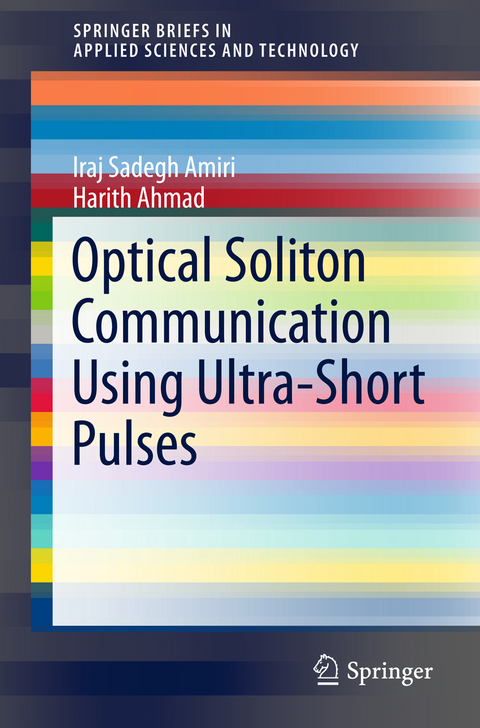
Optical Soliton Communication Using Ultra-Short Pulses
Seiten
2015
|
2015 ed.
Springer Verlag, Singapore
978-981-287-557-0 (ISBN)
Springer Verlag, Singapore
978-981-287-557-0 (ISBN)
This brief analyzes the characteristics of a microring resonator (MRR) to perform communication using ultra-short soliton pulses. The multi optical soliton with FWHM and FSR of 325 pm and 880 nm can be incorporated with a time division multiple access (TDMA) system wherein the transportation of quantum information is performed.
This brief analyzes the characteristics of a microring resonator (MRR) to perform communication using ultra-short soliton pulses. The raising of nonlinear refractive indices, coupling coefficients and radius of the single microring resonator leads to decrease in input power and round trips wherein the bifurcation occurs. As a result, bifurcation or chaos behaviors are seen at lower input power of 44 W, where the nonlinear refractive index is n2=3.2×10−20 m2/W. Using a decimal convertor system, these ultra-short signals can be converted into quantum information. Results show that multi solitons with FWHM and FSR of 10 pm and 600 pm can be generated respectively. The multi optical soliton with FWHM and FSR of 325 pm and 880 nm can be incorporated with a time division multiple access (TDMA) system wherein the transportation of quantum information is performed.
This brief analyzes the characteristics of a microring resonator (MRR) to perform communication using ultra-short soliton pulses. The raising of nonlinear refractive indices, coupling coefficients and radius of the single microring resonator leads to decrease in input power and round trips wherein the bifurcation occurs. As a result, bifurcation or chaos behaviors are seen at lower input power of 44 W, where the nonlinear refractive index is n2=3.2×10−20 m2/W. Using a decimal convertor system, these ultra-short signals can be converted into quantum information. Results show that multi solitons with FWHM and FSR of 10 pm and 600 pm can be generated respectively. The multi optical soliton with FWHM and FSR of 325 pm and 880 nm can be incorporated with a time division multiple access (TDMA) system wherein the transportation of quantum information is performed.
Optical soliton signals propagating in fiber waveguides.- MRR systems and soliton communications.- Solitonic signals generation and transmission using MRR.- Ultra-Short Solitonic Pulses Used in Optical communication.
| Reihe/Serie | SpringerBriefs in Applied Sciences and Technology |
|---|---|
| Zusatzinfo | 22 Illustrations, color; 2 Illustrations, black and white; IX, 51 p. 24 illus., 22 illus. in color. |
| Verlagsort | Singapore |
| Sprache | englisch |
| Maße | 155 x 235 mm |
| Themenwelt | Mathematik / Informatik ► Mathematik ► Algebra |
| Mathematik / Informatik ► Mathematik ► Angewandte Mathematik | |
| Naturwissenschaften ► Physik / Astronomie ► Optik | |
| Technik ► Elektrotechnik / Energietechnik | |
| Technik ► Nachrichtentechnik | |
| Schlagworte | Communication Security • Digital Soliton Pulse Generation • Fiber Waveguide • Microring Resonator (MRR) • MRR • Optical Communication Link • Optical Soliton • Soliton Amplification • Soliton Arrays • Soliton Coding • Soliton Pulses • TDMA • Ultra-short Pulses |
| ISBN-10 | 981-287-557-3 / 9812875573 |
| ISBN-13 | 978-981-287-557-0 / 9789812875570 |
| Zustand | Neuware |
| Haben Sie eine Frage zum Produkt? |
Mehr entdecken
aus dem Bereich
aus dem Bereich
Buch | Softcover (2022)
Springer Spektrum (Verlag)
39,99 €


